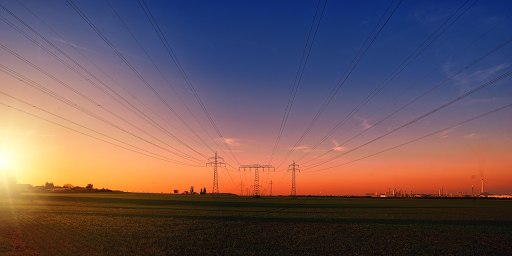Todd De Ryck
I have noticed for quite some time that posts, articles, podcasts, etc by renewable energy analysts disappoint me because of these two critical factors that they don’t bother with, global energy poverty and power engineering.
For example, Max Fawcett posted a “debunking” article on his substack that was completely devoid of these two factors (although he claimed he addressed poverty, I disagree). Markham Hislop interviewed him about this article “Lazy Canadian Intellectuals Misread the Global Energy Transition“. Because of climate change, air pollution and billions living with inadequate, or no, energy, we should all be laser focused on
- How much combustible fuel production has been permanently displaced (combustible fuels include fossil fuels, biomass, wood burning, etc).
- How much greenhouse gases have been reduced (for example, has an electricity grid met the Paris climate target of emitting less than 100 grams of CO2 per kilowatt-hour, averaged on an annual basis, check here).
- How much air pollution has been reduced.
- Reliability and energy security
- Cost. The regions Fawcett used as examples of “electricity systems based predominantly on wind and solar”, haven’t done well on these points. “Predominantly” is defined as “mainly; for the most part” which Texas and Spain certainly are not, there is no electricity grid in the world that is “predominantly wind and solar”.
Renewable energy analysts acknowledge wind and solar are intermittent and yet use Lazard LCOE (Levelized Cost of Energy) reports to show that wind and solar are the cheapest electricity generators. Lazard openly acknowledges they do not account for intermittency in their analysis. See other factors they do not account for in their analysis on the bottom of page 7. There are so many that it is pointless to use their reports in any serious energy analysis. We must move beyond LCOE, as the Clean Air Task Force clearly articulates in their June, 2025 report “Beyond LCOE: A Systems-Oriented Perspective for Evaluating Electricity Decarbonization Pathways“.
Renewable energy analysts often mention batteries, but with minimal quantitative analysis. In November 2021, Bloomberg New Energy Finance stated that by 2030 there would be 356GW/1TWh of BESS (Battery Energy Storage System) for a cost of $262 billion between 2022 and 2030, obviously extremely expensive. By the end of 2024 there was, according to the Volta Foundation, 150GW/363GWh of BESS globally. In 2024, there were approx. 30,000TWh consumed globally, so BESS delivered 0.00121% of global electricity consumption. Obviously BESS plays an extremely insignificant role in global electricity production. About 75% of BESS is installed in China, and Texas expects to have 14GW/20GWh by the end of 2025; not much at all left for everyone else. (Read more here “More battery reality in Texas” and “The Pros and Cons of Utility-Scale Battery Storage“.) There are certainly promising battery technologies on the horizon, but when will they be available at the scale required?
Many renewable energy analysts look to the work of Mark Jacobson as Markham Hislop recently did. Jacobson attempted to do science debate in the courts when his work was challenged, this did not go well for him, as anti-SLAPP is referred to in this case. Jacobson created “The Solutions Project”, which Canada’s NDP used several years ago to model their “Leap Manifesto“. For Jacobson’s work, we will use Germany and Bangladesh for examples. According to Our World in Data, in 2024, for national energy consumption, Germany is 38,000 kwh/person/year and Bangladesh is 3,000 kwh/person/year. According to Jacobson’s work, every country in the world will be using at least 50% less energy in 2050 than they are today. Will Bangladesh in 2050 have a similar standard of living the Germans do today consuming less than 1500kwh/person/year? Clearly, Jacobson and renewable energy analysts didn’t watch the 15- -year-old, nine minute TED Talk, still relevant today, “The Magic Washing Machine“, by Hans Rosling, the founder of “Our World in Data“, “Gapminder Foundation” and author of the book “Factfulness“.
As for power engineering, this thorough, detailed, quantitative analysis “The Renewable Energy Honeymoon: Starting is Easy, the Rest is Hard” was done by Zoe Hilton, Michael Wu and Aidan Morrison of the Centre for Independent Studies in Australia and was published on Oct. 2, 2025. Australia is really struggling with a renewable energy transition and costs are skyrocketing. In my opinion, it shows how critically important dispatchable electricity generators are that provide ancillary services to the electricity grid. This cannot be done by Inverter-Based-Resources (IBRs), such as wind, solar, and batteries, which generate Direct Current (DC) electricity and have it converted to Alternating Current (AC) electricity. Aidan Morrison is interviewed about this report on Australian TV, 6 minutes, 30 seconds, and also provides some further insights on LinkedIn. Sandia National Laboratories released a report in January, 2025 discussing challenges with replacing synchronous generator resources with inverter-based resources. “Utility Experience with Inverter Based Resource Impacts on Transmission Protection“.
Due to climate change, air pollution and fossil fuels becoming too expensive to extract in some parts of the world, amongst other reasons, human beings need to permanently displace fossil fuels and at the same time ensure all of us have a good standard of living (a gordian knot). This requires energy policies all over the world to have comprehensive, detailed quantitative analysis based on data, evidence, facts, science and engineering.

